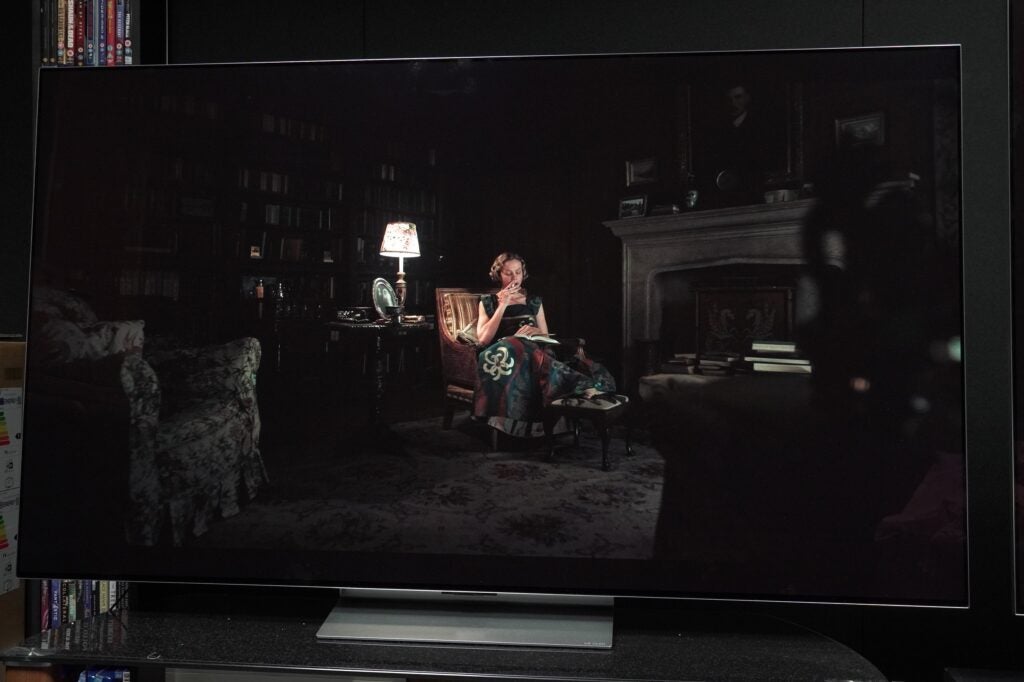OPINION: Recently, I’ve been testing two TVs that couldn’t be more different from each other. On the one side, a 43-inch Metz Roku smart TV, and on the other a 77-inch LG OLED.
As you can see just from the sizes of the screens, there’s a gulf; but there’s also a predictable gulf in terms of the performance, in particular the brightness they can produce, and it makes a big difference.
Ever since 4K HDR TVs came to fruition, brightness has been a key factor. It’s said that to get an impression of HDR, you ought to have a TV that can achieve 500 to 600 nits of brightness.
Of course, for cheap TVs, this can be a problem; and even more so for smaller screens. Without giving away an upcoming review, the Metz Roku TV is not especially bright. Though the specs reveal 250 nits of average brightness, this depends on the picture mode. Play with the settings and it can go brighter but not by much – the TV conks out at about 270 nits or so.
This is considerably less than the 500 nits that is preferred for an HDR TV, but it’s not just the Metz Roku that’s afflicted by this paucity of brightness: it’s most of the affordable HDR TVs on the market. The Xiaomi F2 Fire TV hits 300 nits: a 2022 Samsung BU8000 Crystal UHD is 340 nits, the Sharp FN2KA 400 nits, and the Toshiba UK4D is 330 nits – you get the drift.
This all has an impact on the HDR performance, resulting in scenes set during the daylight that have a gloomy, undercast look but it’s with dark, challenging HDR scenes that these TVs struggle to depict, with detail hard to make out in general. The image, whether in dark or bright settings looks flat, and depending on the tuning of colours, colours can look equally flat, lacking that punch and vibrancy that high brightness can bring.
Compared to a 77-inch LG G3 OLED with its brand new META panel and 1500 nits of brightness. Some may question why a TV ever needs to be as bright as that, but having this much headroom allows for more assured tone mapping with 1000 nit mastered HDR10 and HLG content. It allows a TV to reproduce what’s in the HDR signal without compromise.
Highlights stand out, and of course as this is an OLED, the blacks perfect are perfect, allowing for an infinite level of contrast helped by OLED’s pixel level dimming control.
The result is a spectacular image, regardless of whether it’s SDR or HDR; and this high level of brightness also helps when viewing at wider angles, and wards off reflections, making this OLED more suitable to be used during the daytime rather than with the curtains pulled across. Like a rising tide lifting all boats, higher brightness helps in other areas too.

The difference between the Metz Roku and LG G3 OLED is vast but also speaks to a problem with the TV industry in that cheaper TVs don’t tend to have the capabilities to do HDR properly. If you purchase a Netflix, Disney+, or Apple TV+ subscription and watch 4K HDR content, you’re not getting the experience you could and ought to be getting – you’d be better off watching in either HD or 4K sans HDR, if that’s on option.
Many will point to not being able to afford a £3000 TV in the LG G3, but as a wise person once told me, nothing is ever perfect and there’s always a compromise to be had. A cheaper TV fits into your budget, but in most cases it’ll lack genuine HDR chops. The award-winning TCL Roku put in a good 4K HDR performance, but also had the services of Dolby Vision and HDR10+ to count on. If more TVs carried these HDR technologies, the brightness would still be a problem but less of a significant issue. However, a number of TVs still carry just HDR10 and HLG.
So if you’re looking to get a 4K HDR TV in the sales this year, don’t automatically assume a super-cheap TV is the again you think it might be, judged on price. Instead, aim a little higher in terms of price or consider a TV that supports Dolby Vision. Your wallet may not thank you but you’ll be getting a better viewing experience.




